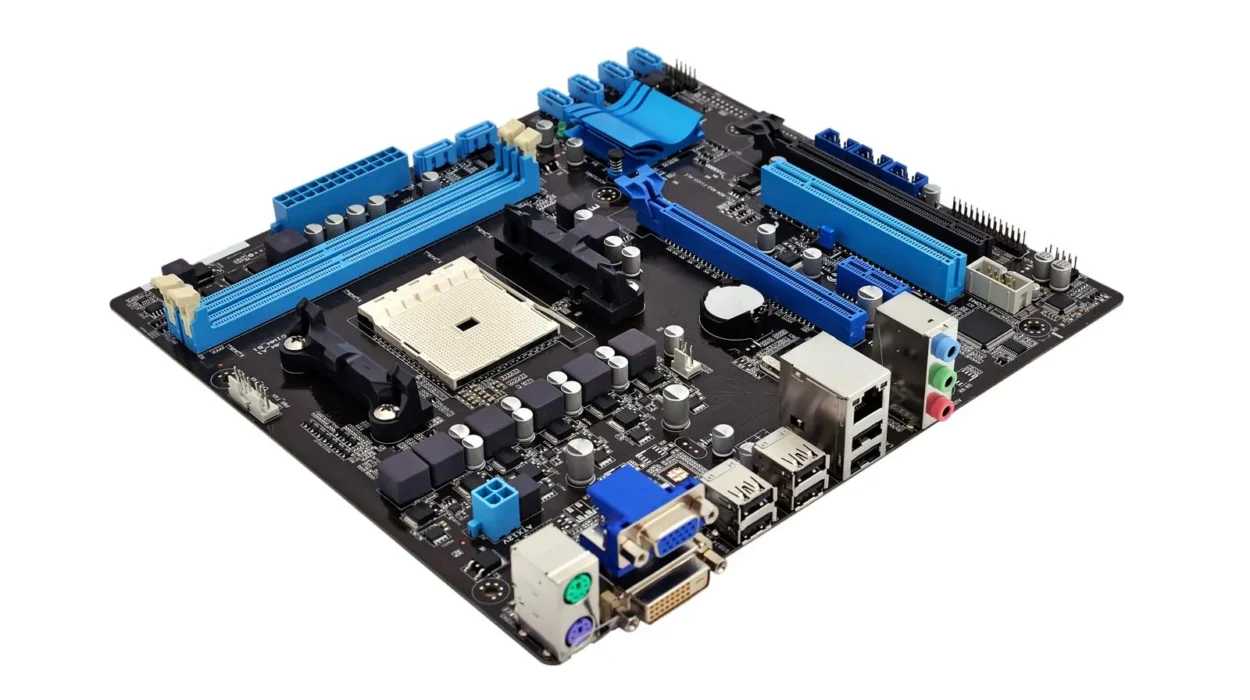A data structure is a fundamental concept in computer science that refers to the way data is organized, managed, and stored in a computer so that it can be accessed and modified efficiently. It is the backbone of every algorithm, program, and application. Without well-designed data structures, computers would not be able to perform tasks effectively or process the vast amount of information required in today’s world.
The term data structure combines two essential ideas: data, which refers to the raw facts and information to be processed, and structure, which refers to the systematic organization of that data. Together, they form the essential architecture through which a computer interprets, manipulates, and stores information.
In simple terms, data structures define how data elements are related to one another and how they can be operated upon. They provide the framework that enables programmers to handle data logically and efficiently. Every piece of software—from a simple calculator to complex artificial intelligence systems—relies on data structures to function correctly.
Understanding data structures is therefore crucial for computer scientists, software engineers, and programmers. It helps them choose the right tools and methods to solve problems, optimize performance, and ensure that applications can handle large amounts of data gracefully.
The Purpose and Importance of Data Structures
The purpose of data structures is to make data manipulation efficient. Efficiency can mean faster access, less memory usage, easier implementation, or a combination of these factors. For example, finding an element in an unordered list may require checking each item one by one, while using a more advanced data structure such as a hash table can make the same operation nearly instantaneous.
Data structures play a central role in nearly every aspect of computing. They determine how databases organize records, how operating systems manage memory, and how search engines index vast amounts of web pages. When software engineers design algorithms, they must consider which data structures will yield the best performance for their specific tasks.
Moreover, data structures are not only about efficiency—they also contribute to clarity and maintainability in programming. Well-chosen structures can make code easier to understand and extend, while poor choices can lead to inefficiency, errors, and complexity.
From a theoretical perspective, data structures form the bridge between abstract mathematical concepts and their practical applications in computer systems. They are the foundation upon which the logic of computation is built, providing the means to represent and manipulate both simple and complex entities.
Fundamental Concepts in Data Structures
Before exploring specific types of data structures, it is important to understand the underlying concepts that govern their design and behavior. At the heart of all data structures lie three essential ideas: data representation, operations, and relationships.
Data representation defines how information is stored in memory. Computers store data as sequences of bits, but data structures give those bits meaning—turning them into integers, floating-point numbers, characters, arrays, or objects.
Operations refer to the actions that can be performed on data structures. These include insertion, deletion, traversal, searching, and sorting. The efficiency of a data structure is measured largely by how well it supports these operations.
Relationships describe how elements in a data structure are connected. For example, in a linked list, each element points to the next; in a tree, elements have hierarchical relationships; in a graph, connections can be arbitrary and complex. Understanding these relationships is essential to designing algorithms that manipulate data effectively.
These concepts form the theoretical foundation of all data structures, from the simplest arrays to the most sophisticated graphs and networks used in artificial intelligence and big data systems.
The Building Blocks of Data Representation
At the most basic level, data in a computer is stored in binary form—ones and zeros. However, this raw binary data must be organized into meaningful units. Primitive data types such as integers, floating-point numbers, characters, and booleans form the atomic building blocks of all data structures.
When these primitive data types are combined, they create composite data types, which can represent more complex entities. For example, an array of integers represents a sequence of numbers, and a structure or record may group several variables of different types to represent an object like a student or employee.
Data representation also involves understanding memory allocation. Some data structures, such as arrays, use contiguous memory allocation, meaning all elements are stored next to each other in memory. This allows for fast access but makes resizing difficult. Others, like linked lists, use non-contiguous memory allocation, where elements are connected through references or pointers, providing flexibility at the cost of slower access times.
These choices affect performance, scalability, and memory efficiency, which are critical considerations in software engineering and system design.
Linear Data Structures
Linear data structures organize elements sequentially, where each element has a unique predecessor and successor, except the first and last. They are the simplest and most commonly used types of data structures because of their straightforward organization and ease of implementation.
Arrays
An array is the most basic linear data structure. It is a collection of elements of the same type, stored in contiguous memory locations, and accessed using an index. Arrays allow random access to elements, meaning any element can be accessed directly using its index in constant time.
Arrays are ideal when the number of elements is fixed and when fast access is required. However, they have limitations. Inserting or deleting elements requires shifting other elements, which can be time-consuming. Additionally, their size must be defined at creation, which limits flexibility.
Despite these limitations, arrays are foundational to programming. They are used in algorithms, image processing, numerical computations, and as the basis for more complex structures such as matrices and heaps.
Linked Lists
A linked list is a more flexible linear data structure that overcomes some limitations of arrays. Each element, called a node, contains data and a reference (or pointer) to the next node. This allows for dynamic memory allocation, meaning elements can be easily added or removed without reorganizing the entire structure.
Linked lists come in several variants, such as singly linked lists, doubly linked lists, and circular linked lists, each offering different trade-offs in terms of memory usage and access time.
While linked lists excel at insertion and deletion, they are slower for random access because elements must be traversed sequentially. Nevertheless, they are widely used in situations where dynamic resizing and frequent insertions or deletions are required, such as in queues, stacks, and memory management systems.
Stacks
A stack is a linear data structure that follows the Last In, First Out (LIFO) principle. The last element added is the first to be removed. This behavior resembles a stack of plates—new plates are placed on top, and the top plate is the first to be taken off.
Stacks support two primary operations: push (to add an element) and pop (to remove an element). Additional operations like peek (to view the top element) are often supported.
Stacks are essential in numerous computing processes, including function calls, expression evaluation, syntax parsing, and backtracking algorithms. In programming languages, the system stack keeps track of function calls and return addresses, making it a fundamental structure for program execution.
Queues
A queue operates on the First In, First Out (FIFO) principle. The first element added to the queue is the first to be removed, similar to a line of people waiting for service. Queues are characterized by two primary operations: enqueue (to add an element at the rear) and dequeue (to remove an element from the front).
Queues are indispensable in computer systems, especially in managing processes, tasks, and data streams. They are used in scheduling, buffering, and handling asynchronous events such as input/output operations. Variants such as circular queues, priority queues, and double-ended queues (deques) offer specialized behaviors for different applications.
Non-Linear Data Structures
Non-linear data structures organize elements hierarchically or in complex relationships, unlike linear structures that maintain a simple sequence. They are powerful tools for representing relationships, hierarchies, and networks.
Trees
A tree is a hierarchical data structure consisting of nodes connected by edges. Each tree has a root node from which other nodes branch out. Every node can have child nodes, and nodes with no children are called leaves.
Trees are used to represent hierarchical relationships such as organizational charts, file systems, and classification structures. Binary trees, a common form, restrict each node to having at most two children.
A special type of binary tree called a binary search tree (BST) maintains the property that for any node, all values in its left subtree are smaller, and all values in its right subtree are larger. This property enables efficient searching, insertion, and deletion operations.
Other variants like AVL trees, red-black trees, and B-trees enhance balance and performance, ensuring that operations remain efficient even as the tree grows. Trees are also fundamental to parsing expressions, compiling code, and managing databases.
Graphs
Graphs are among the most versatile and powerful data structures. A graph consists of vertices (or nodes) and edges that connect pairs of vertices. Unlike trees, graphs can represent arbitrary relationships and can contain cycles.
Graphs can be directed (where edges have direction) or undirected (where edges are bidirectional). They can also be weighted, meaning edges carry numerical values representing cost, distance, or capacity.
Graphs are widely used in modeling networks—whether social, transportation, or communication networks. Algorithms like Dijkstra’s for shortest paths, Kruskal’s and Prim’s for minimum spanning trees, and PageRank for web search ranking all rely on graph theory.
The flexibility of graphs makes them essential for solving complex real-world problems such as route optimization, recommendation systems, and analyzing biological or social networks.
Abstract Data Types
An abstract data type (ADT) defines a data structure conceptually, focusing on its behavior rather than its implementation. It specifies what operations can be performed but not how they are carried out. Examples include stacks, queues, lists, and maps.
The separation of definition and implementation allows programmers to choose the most suitable underlying structure for performance needs without altering the way the data is used. This abstraction principle is key to modularity and scalability in software engineering.
Searching and Sorting in Data Structures
Searching and sorting are two fundamental operations that rely heavily on data structures. Searching involves finding whether a particular element exists within a structure, while sorting arranges elements in a specific order.
The efficiency of these operations depends on the choice of data structure. Arrays and linked lists support linear search, which examines each element sequentially. Binary search, on the other hand, works efficiently on sorted arrays by repeatedly dividing the search interval in half.
Sorting algorithms such as bubble sort, merge sort, quicksort, and heap sort rely on different data structures and have varying trade-offs in time and space complexity. For instance, merge sort is stable and efficient for large datasets but requires extra memory, while quicksort is faster on average but can degrade in certain cases.
Efficient searching and sorting are critical for applications ranging from database indexing to real-time systems, making their study a cornerstone of computer science.
Hashing and Hash Tables
Hashing is a powerful technique for fast data retrieval. It involves transforming data (such as a key) into a fixed-size value called a hash code, which determines where the data is stored in memory.
A hash table uses this technique to achieve nearly constant-time access on average. Each element is stored in a bucket corresponding to its hash code. When multiple keys map to the same bucket (a collision), different strategies such as chaining or open addressing are used to resolve conflicts.
Hash tables are used extensively in implementing dictionaries, caches, and databases. Their ability to perform insertion, deletion, and lookup operations efficiently makes them indispensable for many real-time and high-performance applications.
Data Structures in Databases and File Systems
Data structures play a critical role in how databases and file systems organize, retrieve, and manage large volumes of data. Structures such as B-trees and B+ trees are used in databases to maintain sorted data and support fast insertion, deletion, and search operations.
In file systems, hierarchical tree structures organize directories and files, while indexing and hashing ensure that data can be located quickly. These structures enable scalability, consistency, and reliability in data storage and retrieval.
Modern databases also use advanced data structures such as tries for text indexing and skip lists for distributed systems. The choice of data structure directly influences performance, reliability, and fault tolerance in data-intensive applications.
Data Structures in Artificial Intelligence and Machine Learning
In artificial intelligence (AI) and machine learning (ML), data structures are essential for handling complex models and large datasets. Trees are used for decision-making algorithms like decision trees and random forests, while graphs are fundamental for representing relationships in neural networks and knowledge graphs.
Arrays and matrices are used extensively in ML for storing and manipulating numerical data, particularly in deep learning frameworks that rely on tensor operations. Efficient data organization directly affects the speed and accuracy of training models.
Specialized structures such as heaps, queues, and priority queues are used in AI algorithms like A* search for pathfinding and in scheduling and optimization tasks. The ability to manage and access data efficiently is vital for the performance of intelligent systems.
Dynamic Data Structures
Dynamic data structures are those that can grow or shrink during program execution, unlike static structures such as arrays with fixed sizes. Linked lists, dynamic arrays, trees, and hash tables are examples of dynamic structures that allocate memory as needed.
Dynamic structures are particularly useful in applications where the size of the dataset is unpredictable or changes frequently. They enable flexibility and efficient use of resources, although they may involve additional overhead for memory management.
Complexity and Performance Analysis
The efficiency of a data structure is measured using time complexity and space complexity. Time complexity describes how the execution time of an operation grows with the size of the input, while space complexity measures memory usage.
Big O notation is used to describe these complexities in a standardized way. For example, searching an element in an unsorted array takes O(n) time, while in a balanced binary search tree, it takes O(log n). Choosing the right data structure involves analyzing these trade-offs to achieve the desired balance between speed and memory.
Understanding complexity is not merely theoretical—it has real-world implications. Poorly chosen data structures can lead to slow software, excessive resource consumption, and scalability issues.
Modern Applications of Data Structures
Data structures are everywhere in modern computing. They power the internet, cloud computing, mobile applications, and artificial intelligence. Social networks use graphs to represent user relationships; search engines rely on trees and hash tables for indexing; and operating systems use queues and stacks for process scheduling and execution.
In cybersecurity, hash functions are used for encryption and integrity verification. In data analytics, large-scale structures like distributed hash tables and parallel trees are used to process massive datasets across multiple servers.
As computing evolves, new forms of data structures continue to emerge, optimized for the unique challenges of big data, quantum computing, and machine learning.
The Future of Data Structures
The ongoing evolution of technology demands increasingly efficient and intelligent data structures. With the rise of quantum computing, data structures must adapt to non-classical computation models. In artificial intelligence, specialized structures are being developed to support adaptive and self-organizing behavior.
The future of data structures lies in hybrid and distributed designs that can handle massive data volumes across global networks while maintaining speed and reliability. Researchers are exploring self-balancing, cache-aware, and persistent structures that will drive the next generation of computing systems.
Conclusion
Data structures form the invisible framework that supports every aspect of computer science. They determine how data is stored, accessed, and manipulated, directly influencing the performance and scalability of software systems. From simple arrays to complex graphs, each structure provides unique strengths tailored to specific problems.
Mastering data structures is essential for anyone seeking to understand or build computer systems. It is through data structures that abstract algorithms become real, that logic becomes functionality, and that raw information transforms into meaningful computation.
As technology continues to evolve, the study and innovation of data structures will remain at the heart of computing, guiding the development of faster, smarter, and more efficient systems for the digital age.






